Never Forget: Rachel Willis' exhibit at GalleryDAAS memorializes slavery in Detroit and Martinique
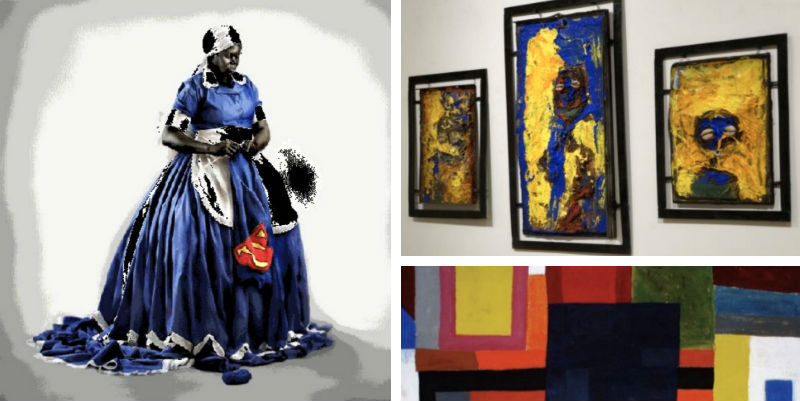
The University of Michigan Department of Afroamerican and African Studies' GalleryDAAS is hosting a multi-media collaborative exhibit by artist and scholar Rachel Willis, titled Il faut se souvenir, we must not forget: Memorializing Slavery in Detroit and Martinique. It combines Willis’ background in fine arts, history, and Francophone studies to bring the under-told history of slavery in Detroit and Martinique.
Willis was raised in Detroit and received a Bachelor of Arts in French & Francophone Studies from the University of Michigan. In her current work, Willis employs a multi-disciplinary approach to her subject matter, using photographs, historical texts, and technology to explore the history of Detroit’s ties to slavery and the French Caribbean Island of Martinique. Willis is currently working on a Master of Arts in Transcultural Studies, with a focus on Francophone and Caribbean history. Her passion to make little-known yet highly important histories accessible through gallery text and voice tour, paired with photography, creates both a challenging and dynamic experience in GalleryDAAS.
The Body Politic: Japanese artist Mari Katayama challenges attitudes toward the differently abled in her debut U.S. solo show
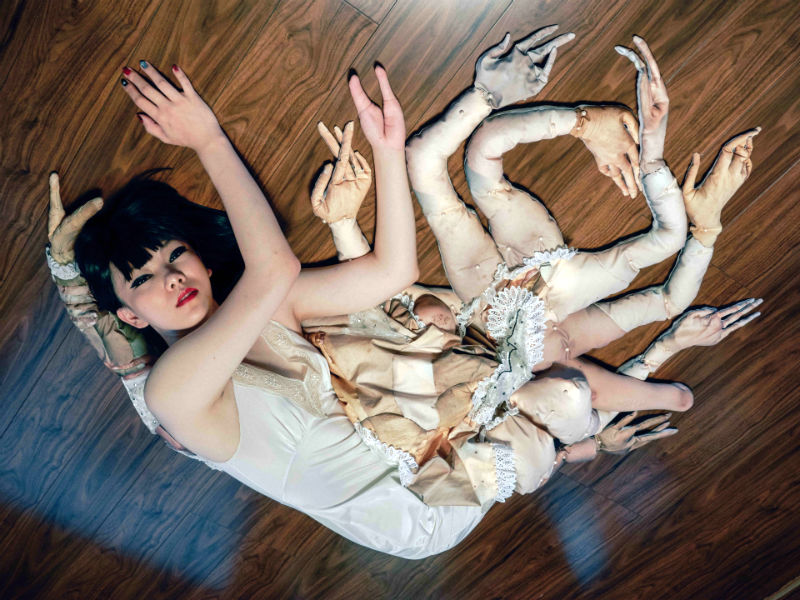
The first solo show in the United States for Japanese artist Mari Katayama is right here in Ann Arbor.
Katayama’s works are on display at the University of Michigan Museum of Art in the Irving Stenn Jr. Family Gallery through January 26, 2020. Her creations include both photographs and sculptures that disrupt normative viewing of the body, which weave a narrative that rejects dominant cultural and societal attitudes toward disabled bodies. Katayama not only uses her own body as a subject, but she also incorporates surrealist, complex, and skillful handmade prosthetics from textiles and other materials. Her works explore concepts of the self, the body and objectification, voyeurism, and agency.
From the Ancient to the Future: Meleko Mokgosi's "Pan-African Pulp" at UMMA

Right: Pan-African Pulp I (detail), 2019, digital print. Courtesy the artist. © Meleko Mokgosi.
University of Michigan’s Museum of Art has launched a new program of site-specific, commissioned installations as part of a new biennial program, with the monumental work of Meleko Mokgosi. He debuted a solo commission to inaugurate the program, with a show titled Pan-African Pulp.
Mokgosi’s four works boldly fill the Vertical Gallery space at UMMA, with a larger-than-life wall vinyl that extends from the first floor to the ceiling of the third level, a series of enlarged and annotated pages from a Pan-African manifesto, which are displayed below a variety of posters from Pan-African movements, vinyl text that wraps around the second and third level bannisters, and a large painted mural.
A Botswana-born artist living and working in New York City, Mokgosi's works explore the history and meaning of Pan-Africanism, which UMMA guest curator Ali Subotnick defines as “the global movement to unite ethnic groups of sub-Saharan African descent.” Mokgosi takes this movement, which began around the start of the 20th century, and uses it as a starting point to explore themes of “power, national identification, colonialism, globalization, whiteness, transnationality, xenophobia, democracy, art history, gender, labor, and the authoritarian or institutional voice.” Each component of the exhibition engages with one or more of these themes.
Four emotionally charged works by Egon Schiele come to UMMA
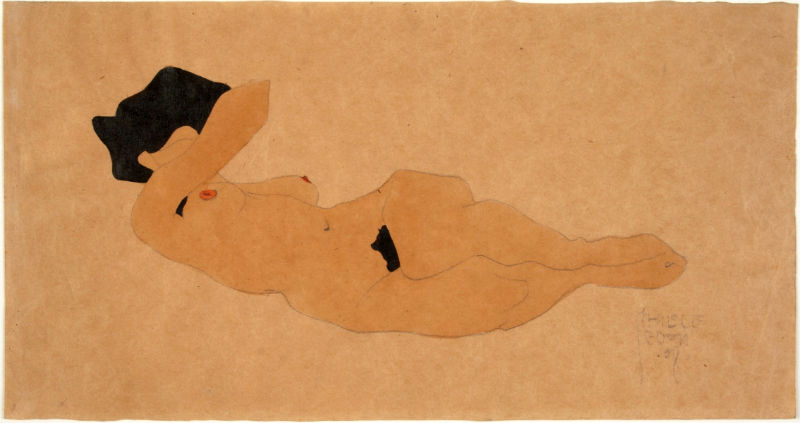
University of Michigan Museum of Art’s Connector Gallery frequently displays new acquisitions to the public. Recently, UMMA received four works by early 20th-century Austrian artist Egon Schiele. These four works include pencil drawings and paintings that convey the unconventional figural style for which Schiele is well-known.
Schiele’s figural works make up the majority of his oeuvre, and these gifted artworks represent his investigations into the human figure, each featuring a nude female, sometimes posed with accessories such as jewelry, stockings, or shoes.
The four pieces were donated to UMMA's permanent collection by retired University of Michigan professors Frances McSparron and the late Ernst Pulgram. These four works by Schiele represent a small portion of UMMA's collection of Austrian and German Expressionist works, many of which the professors later donated to the museum.
Ann Arbor Art Center's "The Instructor Show" showcases the talents who nurture future talents

Befitting an exhibition made up of works from 18 of its teachers, The Instructor Show at the Ann Arbor Art Center offers a diverse range of media, including painting, sculpture, jewelry, printmaking, drawing, fiber arts, and encaustic. The exhibit is a fine display of the talent behind the multitude of programs, events, and classes the Art Center offers.
Jennifer Belair-Sakarian is an artist who was raised and educated in the Midwest. Her works often center on stream of consciousness, featuring imagery related to natural environments, relationships, and human emotions. Belair-Sakarian employs collage, printmaking, painting, and drawing in her practice. Two works in the gallery represent the range of media in her repertoire, including a mixed-media monoprint and a watercolor with gloss gel medium. Belair-Sakarian is inspired by moments from everyday life, where she later synthesizes real and imagined spaces into her visual work.
Gifts of Art's summer exhibitions offer meditative comfort at University Hospital
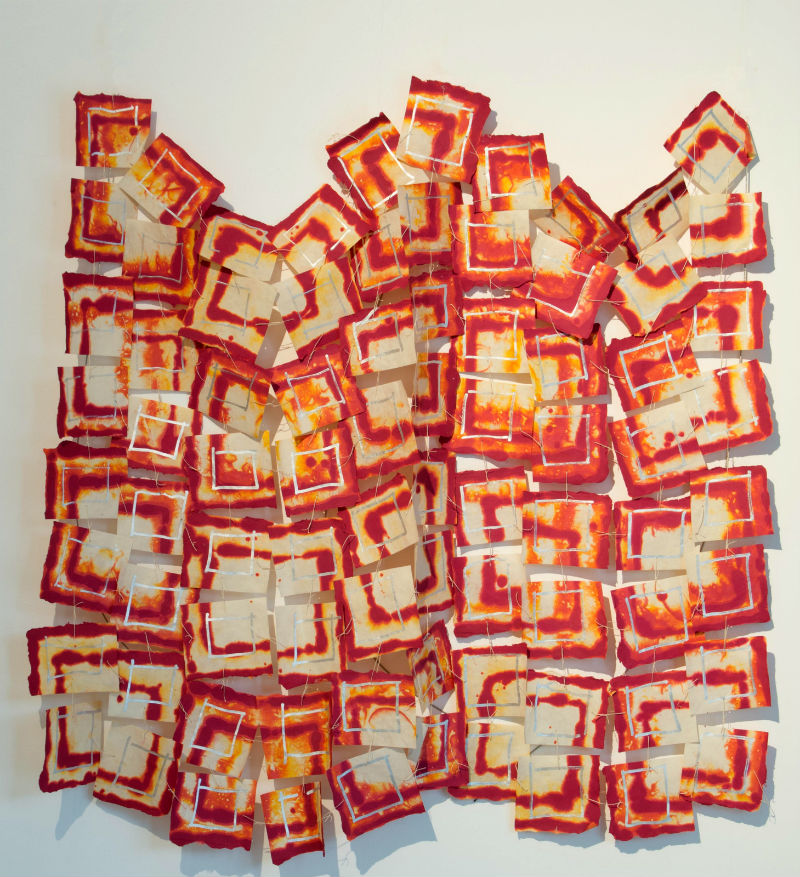
This summer's Gifts of Art at the University of Michigan Hospital, on display through September 6, features the works of a multitude of local and non-local artists in nine gallery spaces that offer multi-media artworks and a historical display by the Yankee Air Museum.
The Gifts of Art program's rotating gallery spaces benefit patients, artists, the hospital system, and the community. These public galleries are at the center of a thriving medical community and “are viewed by approximately 10,000 people each day,” making them “some of the most widely visited indoor, non-museum exhibit spaces in Michigan,” according to Gifts of Art.
Though art might not be the top priority of many hospital-goers, these spaces offer a meditative and even comforting environment -- such as through artist Kate Lebowsky's plush dolls that are currently on display -- amidst an often-chaotic landscape.
Of Skin and Dirt: Ann Arbor Art Center's "Earthbody" explores the human frame's relationship to its habitat
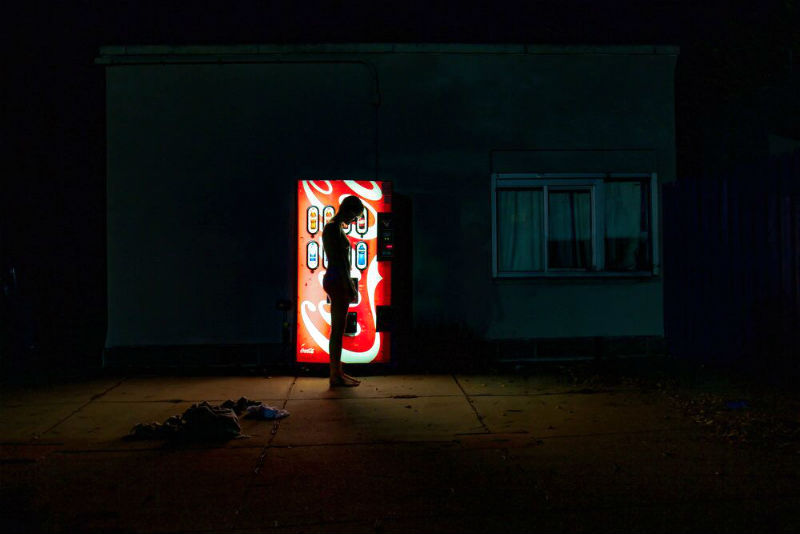
The Ann Arbor Art Center’s Earthbody features works from 11 artists whose works explore, in some aspect, the relationship between the body and the environment. The exhibit focuses on works of current and recent students at the Penny W. Stamps School of Art & Design at the University of Michigan.
The Earthbody exhibition text is short and to the point: “How does our understanding of our bodies as earthly objects affect our ability to perceive and engage with the environment? Earthbody explores these relationships between body, self, and environment.”
As is typical of the group shows at the Art Center, there are a variety of approaches that engage with the subject of the exhibition. From imagery that appears grotesque or unsettling to those works portraying a sense of serenity, the artists pull from personal and shared histories to delve into the broad topics of the body and the environment.
Sonic Resistance in the Motor City: "Call & Response" at U-M's Penny W. Stamps Gallery
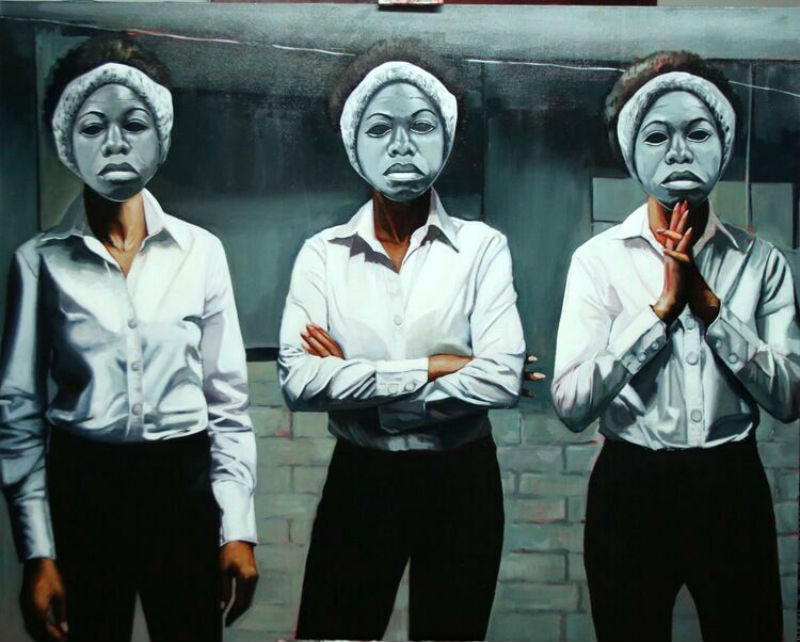
In keeping with recent exhibition themes at the Penny W. Stamps Gallery, its most recent show asks audiences to imagine a better future through the works of innovative and iconic contemporary artists.
Call & Response brings together diverse works and combines elements of the traditional exhibition space, a performance space, and a soundstage. Featuring the works of Romare Bearden, Chakaia Booker, Tony Cokes, Saffell Gardner, Allie McGhee, and Tylonn Sawyer, the gallery asks visitors to consider “sonic resistance in Detroit and beyond” through visual art, sound, and a restored historical stage from jazz-era Detroit. The central hub of the exhibition starts with the refurbished Blue Bird Inn stage and includes representational and abstract artworks responding to the cultural music scene of Detroit and beyond.
The glittering Blue Bird Inn stage was recently rescued from obscurity by Detroit Sound Conservancy. Opening in the late 1930s, the Inn was located on Tireman Street, Detroit’s “Jim Crow line.” In the 1940s, the bar’s owner, Clarence Eddins, used the space as a jazz club until the early 2000s. The exhibit notes that the stage is an “iconic example of African-American mid-century vernacular art and design,” and it's easy to imagine iconic musicians such as Miles Davis and John Coltrane standing on it and playing jazz to bustling audiences in Detroit.
Unmasking Herstory: Nastassja E. Swift's "she was here, once" at U-M's Lane Hall
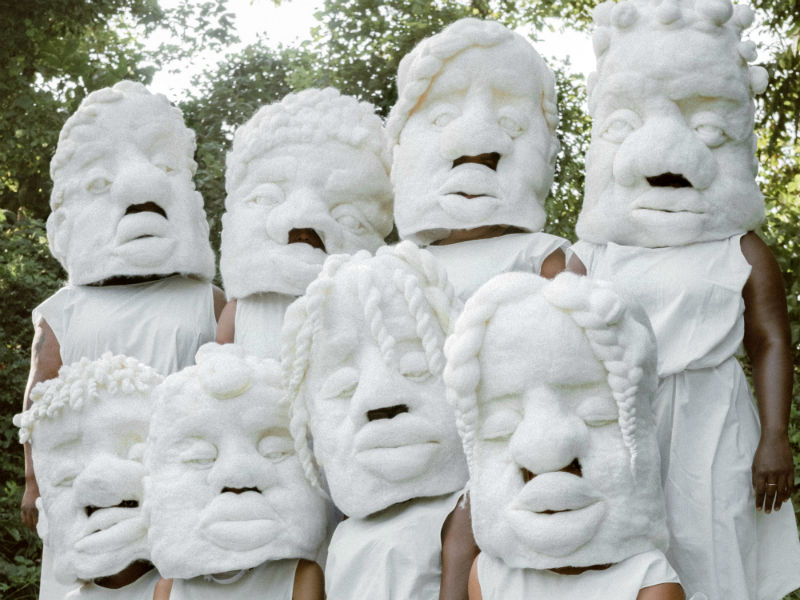
Nastassja E. Swift wants to know what's behind the mask.
The Virginia-based artist's exhibit at Lane Hall, the home of the LSA Women’s Studies program at the University of Michigan, is part of a larger performance piece, titled she was here, once. Swift, in her artist statement, expands upon the intent behind her work:
Circling within conversations of marginalization, use of the black body and otherness, my work incorporates the idea of masking as a metaphorical tool to explore what it means to cover one’s face with another, questioning who’s being hidden and who’s being amplified. The mask themselves often acting as vessels of stories told through movement and in form, depicting the faces of our ancestral mothers as a way of demanding space for her and retrieving her power in the form of visibility of homage. Through fusing these larger-than-life size felted wool portraits with dance, I am able to shape experiences through storytelling and articulate self-identities in relation to ancestry.
Lane Hall’s gallery space is filled with various components of the project. Originally enacted by Swift and a group of eight women in the summer of 2018. The performance took place in Swift’s home city, Richmond, Virginia. First, the artist has suspended three of the large sculptural, white fiber masks worn and made by the women in the project from the ceiling in the main hall. Second, photographic stills from the initial performance line the walls of the gallery space. Finally, two television screens play both a mini-documentary and short film about Swift’s project on a loop.
Jason DeMarte's "Garden of Artificial Delights" examines modern excess via fake still-lifes
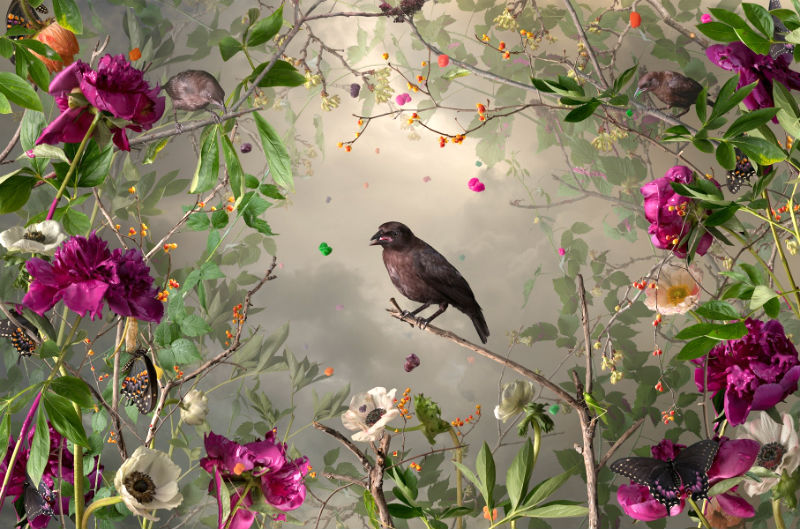
Jason DeMarte's intimate solo show Garden of Artificial Delights mixes the domestic, the “natural,” and the artificial to create a room-sized simulacrum of a still-life at the University of Michigan Museum of Art.
DeMarte takes over the space with his take on classic floral wallpaper, a foreboding gray background with a warm foreground containing peonies, poppies, and female cardinals. The stage of the exhibition is the entire ArtGym, a relatively cozy gallery space that houses DeMarte’s room-sized adhesive wallpaper, and six framed photographs. Each photograph is digitally manipulated and portrays what appears to be at first glance a traditional still life. The color palette and inclusion of floral elements in each photograph echo the wallpaper, with a gray, dreary fog contrasting against vibrant flora and fauna.
Except, it isn’t always flora and fauna featured in the frames of these photographs.
Instead, multi-colored candy floats through the dreary atmosphere, paint drips over a peony and covers a bird entirely, or perhaps canned whipped cream covers wilting flowers from which butterflies are attempting to feast. In the center of the gallery space, there is a square black bench that viewers may utilize in order to absorb the 360-degree immersive experience created by the wallpaper.
Each photograph is a digital photomontage comprised of multiple images, edited to appear “hyperreal,” as UMMA’s Assistant Curator of Photography Jennifer M. Friess observes. The resulting works of art are seductive, pulling us into the dismal yet confusingly bright and vibrant world of the birds and their candy.


































